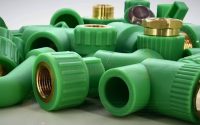The Appeal of Prefab Homes for Sale: A Comprehensive Guide
Introduction to Prefab Homes
Prefab homes, short for prefabricated homes, are gaining popularity in the housing market for their affordability, efficiency, and modern designs. These homes are constructed off-site in a factory setting and then assembled at the desired location. The appeal of prefab homes lies in their streamlined construction process and the ability to customize designs to meet personal preferences. Whether you’re a first-time homebuyer or looking for a second home, prefab homes offer a range of benefits that make them a compelling option for many buyers.
Types of Prefab Homes
Prefab homes come in various types, each with its unique characteristics and advantages. The most common types include modular homes, panelized homes, and kit homes. Modular homes are built in sections or modules in a factory and then assembled on-site. Panelized homes are pre-cut panels that are assembled on-site, while kit homes come with all the materials needed for construction, allowing buyers to take on some of the building tasks themselves. Each type offers different benefits in terms of construction time, cost, and customization options, making it essential to understand these differences when considering a prefab home purchase.
Benefits of Buying Prefab Homes
One of the significant benefits of prefab homes is their cost-effectiveness. The factory-controlled environment helps to reduce labor and material costs, which often translates to lower prices for buyers. Additionally, the efficiency of the construction process means that prefab homes can be completed in a fraction of the time compared to traditional homes. This rapid construction timeline not only reduces overall costs but also minimizes the time spent waiting for your new home. Moreover, many prefab homes are built with energy-efficient materials and designs, offering long-term savings on utility bills and a smaller environmental footprint.
Factors to Consider When Purchasing Prefab Homes
When purchasing a prefab home, several factors need to be considered to ensure you make the best choice. Location is crucial, as the site must be suitable for the type of prefab home you choose and meet local zoning and building regulations. Additionally, it’s essential to work with a reputable manufacturer and builder who can provide high-quality materials and craftsmanship. Budgeting is another critical aspect, as while prefab homes are generally more affordable, there can still be additional costs for land, permits, and site preparation. Thorough research and planning will help you navigate these factors and find a prefab home that meets your needs and preferences.
The Future of Prefab Homes
The future of prefab homes looks promising, with advancements in technology and design continually enhancing their appeal. Innovations such as sustainable building materials, smart home technology, and improved energy efficiency are becoming more common in prefab homes. These developments not only make prefab homes more attractive but also align with growing trends toward environmentally friendly and tech-savvy living. As the housing market evolves, prefab homes are likely to play an increasingly significant role, offering modern, affordable, and customizable housing solutions for a diverse range of buyers.prefab homes for sale



